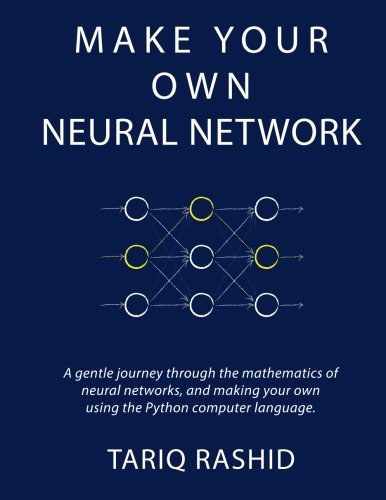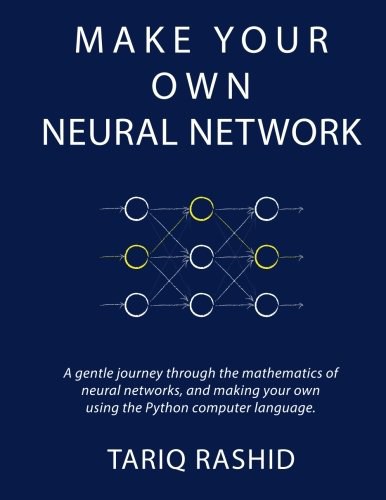
《Make Your Own Neural Network》DIY Neural Network
1
0

精灵王子 2023-09-10 23:37:48
前言: 这篇文章介绍一本小书,《Makeyourownneuralnetwork》,书籍讲解了神经网络的原理以及使用python实现神经网络。文章记录核心知识,对书中的公式再进行推导。整体而言书籍讲解比较通俗,不足之处在于体系比较散,没有说清反向传播与梯度下降的关系。
Chapter 1 How They Work: 英里与千米的转化 Again without getting too distracted by exact ways of working out c, and to remain focussed on this idea of successively refining it, we could suggest that the correction is a fraction of the error. Thats intuitively right - a big error means a bigger correction is needed, and a tiny error means we need the teeniest of nudges to. kilometres convert to miles Key Points: - All useful computer systems have an input and an output, with some kind of calculation in between. Neural networks are no different. - When we dont know exactly how something works, we can try to estimate it with a model which includes parameters which we can adjust. If we didnt know how to convert kilometres to miles, we might use a linear function as a model, with an adjustable gradient. - A good way of refining these models is to adjust the parameters based on how wrong the model is compared to known true examples.
训练简单的分类器 三层神经网络 A、前向传播计算 B、反向传播解释 C、权重更新 引:梯度下降是一种优化算法,为了求损失函数的极值。反向传播算法是一种更适用于多层神经网络结构特的梯度下降法(使用反向传播算法更容易求解梯度)。
总结: 整体下来书籍阅读比较顺畅,有些需要计算的地方值得停下来耐心算一算。书籍第一章围绕神经网络的理论进行讲解,通过简单的千米与英里转化以毛虫与瓢虫的分类器讲解前向传播,而后通过具体讲解三层神经网络的反向传播算法,讲清楚了神经网络训练的具体原理。第二章围绕使用Python如何构建神经网络进行阐述,书籍中也包含源码。此外还发现一些值得参考的视频,也简单整理如下: - http://makeyourownneuralnetwork.blogspot.com/ - https://www.bilibili.com/video/BV1aB4y13761/spm_id_from=333.337.search-card.all.click&vd_source=1542a52f04335c1d8415d392ab399b7e
相关推荐
萤火谷的梦想家
艾莉森•麦吉出生于1960年,是美国《纽约时报》畅销书作家,同时也是大都会州立大学创意写作课的教授。她的作品被翻译成20多种语言并出版,也曾被提名普利策奖,并获得苏斯博士奖金奖、克里斯托弗图书奖、美国 [美]艾莉森•麦吉/[美]克里斯托弗•丹尼斯/绘 2023-03-27 16:50:25鬼马女神捕1·绝密卧底(上)
腹黑凤凰vs毒舌鸡妖——蓝翎:“小姬,跟我去人界吧!”姬十四:“干吗?让人宰了我做小鸡炖蘑菇吗?”蓝翎:“不啊,让妖怪宰了你做小鸡炖蘑菇更气派。”凤凰蓝翎和鸡妖姬十四生活在无忧无虑的灵界。他们的故乡叫 郝天晓 2023-04-17 00:22:47© 2023-2025 百科书库. All Rights Reserved.












发表评价